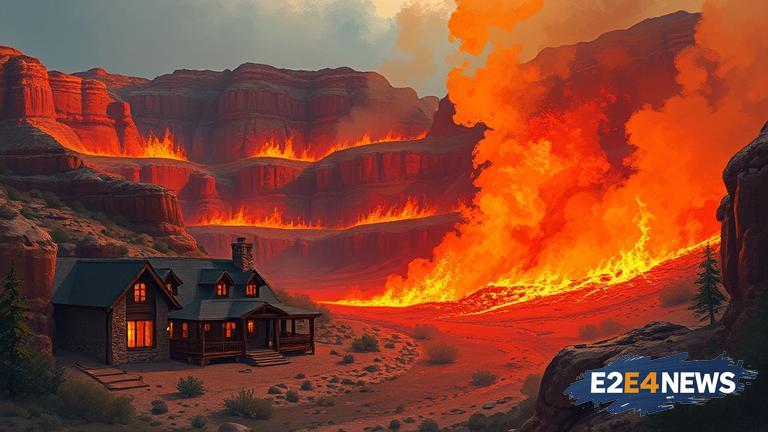A recent wildfire at the Grand Canyon has raised questions about the management of wildfires in the area. The fire, which destroyed a historic lodge, was initially allowed to burn for several days before being brought under control. The lodge, which was a popular destination for tourists, was completely destroyed in the blaze. The fire was first reported on a Tuesday and was allowed to burn for several days as part of a controlled burn strategy. However, the fire quickly spread out of control, fueled by strong winds and dry conditions. Despite efforts by firefighters to contain the blaze, the lodge was ultimately destroyed. The cause of the fire is still under investigation, but it is believed to have been started by a lightning strike. The destruction of the lodge has been met with sadness and outrage from the community, with many calling for an investigation into the handling of the fire. The incident has also raised questions about the effectiveness of the controlled burn strategy and whether it was appropriate to allow the fire to burn for so long. The Grand Canyon is a sensitive ecosystem, and the use of controlled burns can be a useful tool for managing vegetation and reducing the risk of larger fires. However, the strategy must be carefully managed to avoid unintended consequences, such as the destruction of historic buildings. In this case, it appears that the fire was not adequately monitored, and the decision to allow it to burn for so long was a mistake. The investigation into the fire is ongoing, and it is likely that changes will be made to the way that wildfires are managed in the area. The destruction of the lodge is a significant loss, not only for the community but also for the many tourists who visit the Grand Canyon each year. The lodge was an important part of the park’s history and culture, and its loss will be deeply felt. The incident serves as a reminder of the importance of careful planning and management when it comes to wildfires, and the need for a balanced approach that takes into account the needs of both the environment and the community. The Grand Canyon is a unique and fragile ecosystem, and it is essential that it is protected and preserved for future generations. The use of controlled burns can be an effective tool for managing vegetation, but it must be used with caution and careful planning. The investigation into the fire will provide valuable insights into what went wrong and how to prevent similar incidents in the future. The community is coming together to support the affected areas and to rebuild what was lost. The incident has also sparked a wider conversation about the management of wildfires and the importance of protecting historic buildings and sensitive ecosystems.
